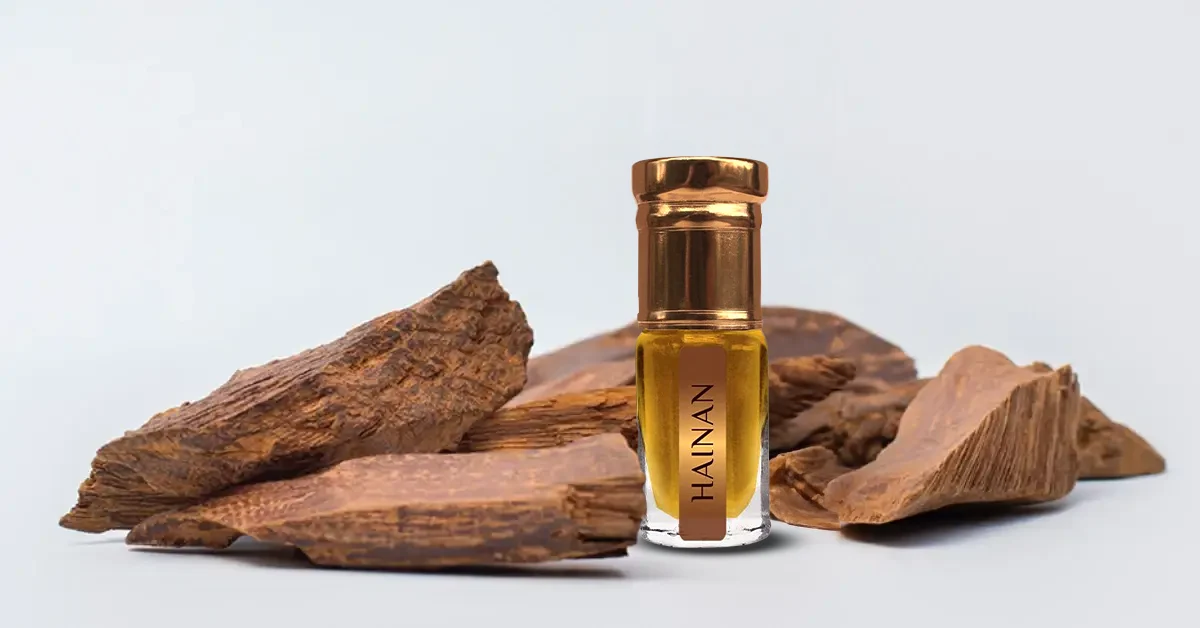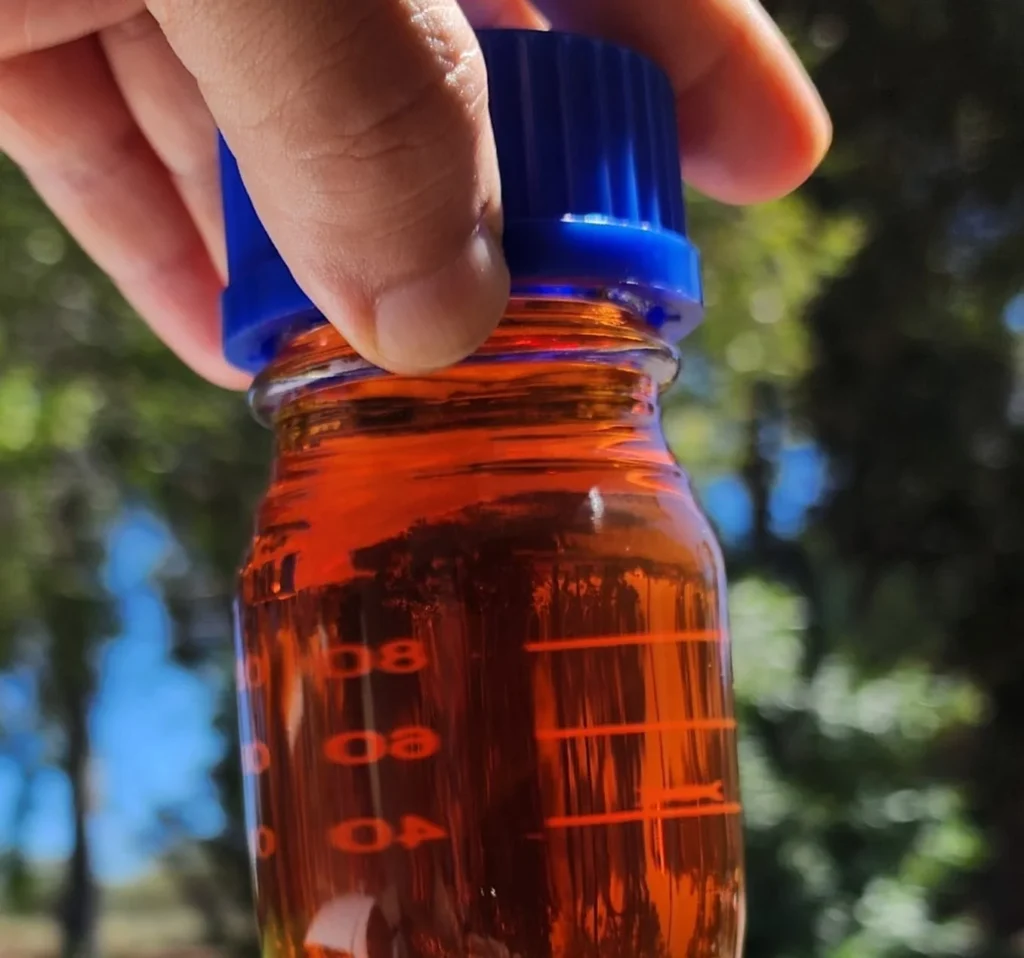What is Oud? Meaning, Types, Uses and Cultural Value

Oud, also known as Agarwood, is one of the most treasured and talked-about scents in the world. With it’s deep, woody scent and rich history, Oud has caught the hearts of fragrant lovers in many cultures. From ancient traditions to modern perfumes, Oud has a special place because of its rare origin, strong scent and spiritual value. In this guide you will learn, what is oud and why it’s so valuable, how it is used today, and provides different types and benefits.
What Is Oud? And Why it is So Valuable?
Oud is a rare and precious oil that comes from the wood of a tree called agarwood. When this tree gets infected by a certain type of fungi or physically wounded , it produces a dark, fragrant resin as a way to protect itself. This resin-soaked wood is what gives us Oud. Oil can then be distilled from this wood, which gives a deep, rich and long-lasting scent. People have loved oud for centuries because of their unique scent.
Many call oud oil “liquid gold” due to the fact it is one of the most high priced oils on the global. The cause is that not each agarwood tree produces this resin, it occurs in unique instances, and it takes a few years to shape. Oud is valued in many cultures, in particular in the Middle East and Asia, where it’s used in perfumes, incense, or even in unique ceremonies. Its scent is complex and unforgettable.
A Short History of Oud
Oud has a totally vintage and rich history that goes back thousands of years. People across Asia and the Middle East appreciate it as part of their cultures. In the Islamic tradition, the Prophet Muhammad (peace be upon him) used agarwood, and the practice of burning it for its heady scent continues to be practiced today. It is even reported as one of the beautiful things from Paradise.
Jewish tradition mentions oud in ancient texts like the Song of Songs. Kings like Solomon used it as incense. This shows oud’s strong place in spiritual and cultural practices.
Long ago, in places like Vietnam, people were already harvesting oud by the 3rd century. Traders took it to China and Japan, where people burned it during special rituals. In fact, wealthy families in ancient China used agarwood even in their coffins. In Buddhism, prayer beads made from agarwood are still considered very sacred.
The people of the Islamic world burned oud and also wore it as a personal scent. Later, when Oud reached Europe, Royalty could not oppose the attraction. Over time, Oud became a symbol of status, spirituality and meditation in many cultures.
Types of Oud
Oud comes from different regions and species, and each has its own special odor, lovers and price. The place where the agarwood tree grows, the age of the tree and the way people extract the oil, all shape the differences. Some oud smells soft and sweet, while others are strong, woody and animalic.
Indian Oud (Hindi Oud)
People know Indian Oud for its deep, strong, and bold scent. It’s very popular in the Middle East for its rich, smoky aroma that lasts a long time. This type of oud is often used in traditional perfumery and special occasions.
Cambodian Oud
Cambodian Oud has a smooth and sweet scent. It’s softer than Indian oud, which makes it a good choice for beginners or for daily wear. The scent is warm, rich, and easier on the nose.
Thai Oud
Thai Oud is lighter and sometimes has fruity or spicy notes. It’s not as strong as Indian oud, but still has a beautiful depth. It works well for those who prefer a more gentle oud experience.
Laotian Oud
People describe Laotian Oud as a smooth, sweet and creamy smell. It provides a good balance between woody and soft notes, making it quite popular in niche perfumes.
Malaysian Oud
People know the Malaysian oud for their dark, wooden and soil smell. It often sits between strong and smooth, offering a balanced oud experience that fits both new and experienced users.
Sri Lankan Oud
People love Sri Lankan Oud for its soft, warm, and spicy smell. It’s not too heavy and is often used in blends for a well-rounded scent.
Wild Oud
Wild Oud comes from natural grown trees in forests. It’s very rare and expensive because of its deep, complex smell and natural aging. The scent is often stronger, richer, and more unique.
Cultivated Oud
Farmers harvest Cultivated Oud from agarwood trees grown on farms. It’s more affordable and easier to find than wild oud. While the scent may be lighter, it still offers a beautiful natural aroma.
Benefits and Uses of Oud
Oud gives more than a pleasant scent. People use it for many reasons in daily life, spiritual practices, and personal care. Here are some common uses and benefits of oud.
- Used in perfumes: Perfume producers add to Oud to provide a strong, deep odour that lasts on the skin or cloth for a long time.
- Burned during prayer or meditation: People burn the oud wood or oil to create a quiet place during prayer or meditation. Smoke helps cleanse the mind.
- Reduces stress: The smell of oud provides comfort and helps the body feel relaxed over time.
- Massage is used in oils: People mix oud oil in massage mixtures to relax body and skin care.
- Freshens the home: Families burn oud to fill their homes with warm and welcome scents, especially during trips and meetings.
- Supports Skin Care: Some people use oud oil to help with swelling or small skin problems.
Oud plays an important role in many cultures. The rich scent and natural benefits make it an important part of both daily life and special moments.

How Oud Is Used in Today’s Perfumes?
Oud is a popular ingredient in many modern perfumes. Perfumers use it to add depth and warmth to their fragrance blends. Its sturdy, woody scent offers the perfume a rich base that lasts for hours. Even a small amount of oud can alternate the texture of a perfume, making it stand out.
Today, oud is often combined with floral, spicy, or sweet notes to create new and interesting scents. You can locate it in both men’s and women’s perfumes. Some perfumes use natural oud oil, even as others use synthetic variations to make it less expensive. Either way, oud stays a favourite preference for people that love deep and bold fragrances.
Why Oud is so Expensive?
Oud is expensive because it comes from a rare tree called agarwood. This tree only produces oud while it gets inflamed by using a unique kind of mold. Not all trees get this infection, and it takes many years for the resin to form in the wood. This makes oud very hard to find in nature.
The process of getting oud oil is also slow and done with care. Workers must find the right trees, harvest the wood, and then slowly distill the oil. Because it takes time, talent, and rare materials, the final product will become highly-priced. That’s why even a small bottle of actual oud oil may be expensive.
Why Did Oud Become So Famous?
Oud became famous because of its rich, deep scent that sticks out from other perfumes. People within the Middle East, South Asia, and parts of Asia have used it for hundreds of years in every day life, prayers, and special occasions. Its strong smell, long-lasting nature, and cultural cost made it very popular in those areas. Over time, more humans round the arena commenced noticing and loving it.
Perfume makers in Europe and the West additionally started adding oud to their scents. They noticed that oud gave warmth and unique touch to perfumes. Celebrities and famous designers began using it, which made it even more famous. People today know oud as a rare and unique ingredient that makes perfumes experience rich and particular.
Experience Pure Oud with Al Shareef
Al Shareef , brings you the real essence of actual oud, sourced with care, crafted with passion, and presented in its purest form. Whether you are attracted to the deep richness of wild oud or the softer contact of blended oils, our series honors the undying beauty and lifestyle behind every drop. Each scent tells a story, rooted in lifestyle and crafted to last.
If you need natural oud oils, alcohol-free perfumes, or incense that brings a warm scent to your area, Al Shareef has something for you. Take a look at our collection and locate the heady scent that matches your mood, your moments, and your manner of lifestyle. Let oud emerge as a part of your everyday habits, similar to how it has been for people for hundreds of years.
Key Takeaways
- Oud is one of the most expensive oils due to its rarity and slow production.
- People have used it in perfume, incense and religious practice for centuries.
- People in many cultures, especially in the Middle East and Asia, Oud.
- There are many types of Oud like Indians, Cambodian, Thai, Arabic and more.
- Oud can be soft, sweet, strong or smoke color, it depends on where it comes from.
- People use Oud in perfumes, body oils, massage oils, household scents and skin care.
- In modern perfumes, the Oud adds depth and makes the scent long.
- Alpha Aromatics uses Oud in smart mixtures to create different moods and styles.
- People use Oud in perfumes, creams, soaps and candles.
- Al Shareef Oudh offers real Oud products that are natural, non-alcoholic and long-lasting.
FAQs
What smell is Oudh?
Oudh has a deep, warm, and woody fragrance. It also can smell sweet, smoky, or earthy relying on the type of agarwood used. The smell is powerful and long-lasting, often defined as rich and comforting. Many humans find the scent of oudh precise and very calming.
What is Oudh Attar?
Oudh attar is a natural perfume oil made from agarwood as the main based and the addition of other fragrant material. It’s created without alcohol and is utilized by applying a small quantity to the skin. Oud attar has a oudy, woody scent that remains for hours and is popular for its herbal and conventional feel.
What is Oud and Agarwood?
Oud and agarwood are names for the same thing. Agarwood is the name of the wood that comes from a tree infected by a special mold. When the tree produces a dark resin to shield itself, that resin-rich will become oud.
What is Dehn Al Oud?
Dehn Al Oud means “pure oudh oil” in Arabic. People make Dehn Al Oud by distilling resin-rich agarwood to get the oil. It has a strong, rich, and woody smell. People use it
Why Do Muslims Wear Oud?
Muslims wear oud because they see it as a clean and pleasant smell. It is also part of the Sunnah (tradition) of the Prophet Muhammad (peace be upon him), who used it for fumigation. People wear it during prayers, special events, and daily life to stay fresh and clean.
What is Oudh and Bakhoor?
Oudh is a fragrant wood from the agarwood agarwood tree, while bakhoor refers to wood chips blended with other ingredients to make incense for burning. People burn Bakhoor in homes or mosques to make the air smell nice. People use both oudh and bakhoor for their good smell and cultural value.